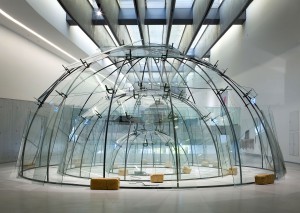- full price € 15 at the box office - € 14 online
- reduced price € 12 at the box office - € 11 online
for young people aged between 18 and 25 (not yet turned 25); for groups of 15 people or more; La Galleria Nazionale, Museo Ebraico di Roma ticket holders; upon presentation of ID card or badge: Accademia Costume & Moda, Accademia Fotografica, Biblioteche di Roma, Centro Sperimentale di Cinematografia, Enel (for badge holder and accompanying person), FAI – Fondo Ambiente Italiano, Feltrinelli, Gruppo FS, IN/ARCH – Istituto Nazionale di Architettura, Sapienza Università di Roma, LAZIOcrea, Palazzo delle Esposizioni, Amici di Palazzo Strozzi, Accademia Nazionale di Santa Cecilia, Scuola Internazionale di Comics, Teatro Olimpico, Teatro dell’Opera di Roma, Teatro di Roma, Università degli Studi di Roma Tor Vergata, Youthcard; upon presenting at the ticket office a Frecciarossa or a Frecciargento ticket to Rome purchased between 27 November 2024 and 20 April 2025
- open € 18
valid for one year from the date of purchase
- free
minors under 18 years of age; disabled people requiring companion; EU Disability Card holders and accompanying person; MiC employees; myMAXXI cardholders; registered journalists with a valid ID card; European Union tour guides and tour guides, licensed (ref. Circular n.20/2016 DG-Museums); 1 teacher for every 10 students; AMACI members; CIMAM – International Committee for Museums and Collections of Modern Art members; ICOM members; journalists (who can prove their business activity); European Union students and university researchers in art history and architecture, public fine arts academies (AFAM registered) students and Temple University Rome Campus students from Tuesday to Friday (excluding holidays); IED – Istituto Europeo di Design professors, NABA – Nuova Accademia di Belle Arti professors, RUFA – Rome University of Fine Arts professors; upon presentation of ID card or badge: Collezione Peggy Guggenheim a Venezia, Castello di Rivoli Museo d’Arte Contemporanea, Sotheby’s Preferred, MEP – Maison Européenne de la Photographie; on your birthday presenting an identity document
Collection
MAXXI’s Collection of Art and Architecture represents the founding element of the museum and defines its identity. Since October 2015, it has been on display with different arrangements of works.



































16 June 2012 – 13 January 2013
Architecture Archives Centre Study Room
MAXXI Architettura presents an exhibition devoted to the Brion Tomb at San Vito d’Altivole, a masterpiece by the architect Carlo Scarpa. The exhibition is configured in two separate sections: drawings and photographs. On the one hand the original drawings and models relating to the Venetian master’s monument, on the other a sequence of photos by the great Italian photographer Guido Guidi, who has worked on the theme of the Brion Tomb, producing over 600 images.
Both the drawings and the photographs belong to the MAXXI Architettura collections.
Carlo Scarpa | drawings
curated by Guido Pietropoli
Carlo Scarpa (1906/1978), widely known for his glassware, museums, houses and furnishings is also famous for the beautiful drawings of his architecture.
Thanks to a significant body of graphic works, every project may be examined through its “Creative Confession” as in a sequence from a film.
Giuseppe Brion, the founder together with his wife Onorina, of Brion Vega, the famous manufacturer of radios and televisions that have become icons of Italian design, died suddenly on 12 September 1968.
His wife and his son Giuseppe asked Carlo Scarpa to design a family tomb to be built on a plot to the Northeast of the cemetery of S. Vito, the Brion family’s hometown.
10 years’ work and over 2,000 sketches, studies, models and construction drawings separated the first project and the finished tomb.
The drawings reveal Scarpa’s passionate and arduous design process, while each of them represents a self-contained work of the highest quality.
“Architecture can be poetry” is a quote from the title of the conference held by Carlo Scarpa at the Vienna Academy of Fine Arts on 16 November 1976.
Guido Guidi | photographs
curated by Francesca Fabiani
Guido Guidi photographed the Brion Tomb for a decade: a research project launched in 1996 through a commission from the CCA in Montreal and which the photographer has since continued independently, producing over 600 images that provide a new and poetically revealing vision of this masterpiece of Scarpa’s architecture.
What is presented in the exhibition is a significant selection of 17 photos based on geometric forms of light and shadow that emerge and dissolve on the walls of the tomb.
Far from any documentary intent, Guidi’s research has investigated the forms and references of the monument through the exploration of the notions of time, space and light.
[widgetkit id=22351]